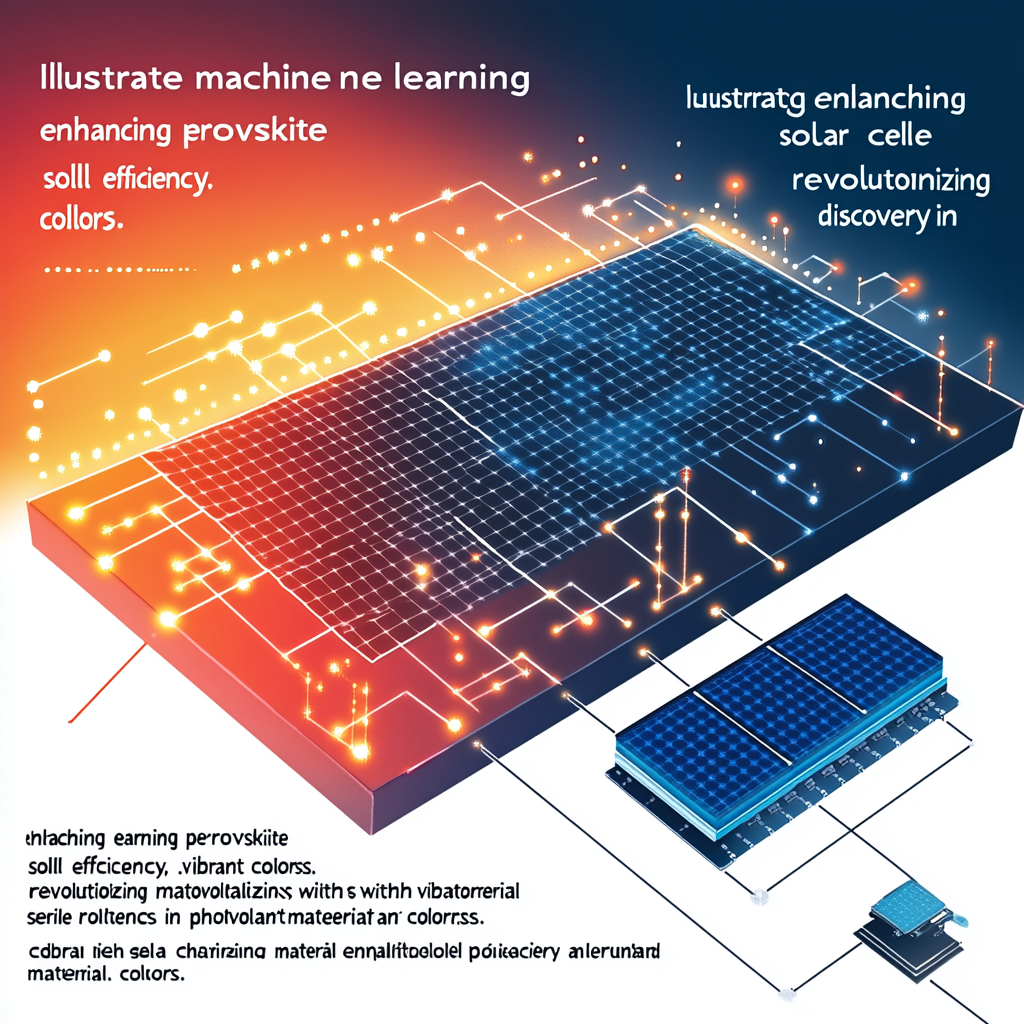
“AI Advances Propel Perovskite Solar Cells to New Efficiency Heights”
In the ever-evolving landscape of renewable energy, solar energy—our great celestial gift—stands tall. Yet, despite its vast promises, efficiency remains an elusive beast. Enter the radical changemaker: machine learning. This isn’t just a trendy buzzword; it’s a full-blown revolution steering us towards solar cells that don’t merely sip sunlight but guzzle it like a thirsty traveler at a fountain.
We're focusing on perovskite solar cells, those remarkable little gems that have burst onto the scene and threatened to dethrone traditional silicon. Now, consider this: perovskites are the juvie delinquents of the solar cell world—less costly, easier to produce, but notoriously misunderstood and underutilized. For anyone in the solar game, it’s crucial to realize that these materials house enormous potential. However, there’s a catch. Efficiency hinges on the band gap—a fancy term that encapsulates how effectively a material captures sunlight and transforms it into usable electricity. If you don’t have the right band gap, your solar cell could evaporate into a disappointing haze of wasted energy.
Now, here’s where the exciting twist unfolds. A group of brainiacs, led by the visionary Haiyuan Wang and his partner-in-crime Alfredo Pasquarello from the École Polytechnique Fédérale de Lausanne, have harnessed the might of machine learning to tackle this band gap conundrum. Together with a cadre of researchers from Shanghai and Louvain-La-Neuve, they crafted an extensive dataset of band-gap values across 246 perovskite materials. They essentially built a playground for machine learning—a chance for algorithms to frolic among data points and unearth new insights.
What happened next is straight out of a sci-fi novel: a machine learning model, trained on this dataset, took a wild spin through a massive collection of around 15,000 materials and emerged victorious, spotlighting 14 previously unknown perovskites. These newly crowned materials didn’t just have good looks; they boasted band gaps and stability that could mean a quantum leap in efficiency for solar cells. It's like finding a diamond in a coal mine and realizing it's not just shiny but also the key to a new energy era.
And not to be outdone, innovation begets innovation. The fruits of this labor bear testimony in the form of jaw-dropping efficiency advancements. Professor Xu's crew at the University of Science and Technology of China isn’t just playing around—they’ve set the bar with a dazzling stable efficiency of 26.7%. This isn’t a one-off win; it’s a trend. For three years straight, Xu and his team have broken records, and one can’t help but ponder what future feats lie ahead. Could they be inching us closer to a solar cell that performs as well as our ever-rising expectations?
But we mustn't stop at just basic efficiency. Machine learning’s tentacles reach further into the realm of tandem solar cells—think of them as the dynamic duo of solar technology. By smashing together different materials, like perovskite and silicon, we’re edging toward power conversion efficiencies that would make traditional solar panels weep in envy. As of 2023, the coolest kid on the block is a perovskite-silicon tandem solar cell, which has been certified at an astounding 33.9% efficiency. Let that sink in—the idea that we can meld materials to coax out superior performance.
While we marvel at these breakthroughs, it's also essential to recognize how machine learning is reshaping scientific collaboration itself. Researchers at MIT have developed AI agents that take on roles akin to cooperative scientists, engaging in evidence-based hypothesis generation. This echoes the sentiments of the late 20th century optimism about AI’s potential to disrupt and redefine industries. Imagine this AI scuffle in the ever-exciting field of perovskites—watch AI agents whir away, propose new materials, and optimize combinations all while us mere mortals sip coffee and witness this renaissance unfold.
So, then, what does this mean for our green future? The marriage between machine learning and perovskite solar cell research isn’t merely a flirtation; it’s an entire relationship blossoming right before our eyes. It’s the perfect pairing, blending innovation with need, fuelled by data-driven insights that drive us closer to a sustainable future. We're standing on a precipice, about to leap into a world where our solar cells might actually be worth their weight in glowing promises.
Want to stay up to date with the latest news on neural networks and automation? Subscribe to our Telegram channel: @channel_neirotoken.
The tale of perovskites and machine learning is just one chapter in the overarching narrative of renewable energy. The twists and turns are sure to keep us on our toes. We'll be better prepared for a world that still grapples with energy scarcity, environmental challenges, and the pressing need for alternatives. Stick around; there's plenty more in this saga that’s yet to be uncovered.

